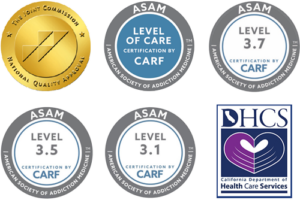Where Do People Get Fentanyl?
Published on: December 20, 2023 | Updated on: December 3, 2025
Fentanyl, a powerful synthetic opioid, is one of the most addictive and dangerous drugs sold on the streets. More powerful than heroin and morphine, it’s highly effective for pain management in a medical setting—but also incredibly risky when abused.
So, where do people get fentanyl? It’s an important question for parents, teachers, first responders, teens, and everyone in between to be able to answer. When you know how people find fentanyl, you can protect yourself and others from addiction and overdose.
Types of Fentanyl
For those asking, “Where can you buy fentanyl?” it’s important to understand the types of fentanyl and how they vary.
Pharmaceutical Fentanyl
Pharmaceutical fentanyl is used for pain management. This drug is a mainstay in hospitals for severe pain like that experienced after surgery or in cancer patients. Pharmaceutical fentanyl is rigorously controlled and legally prescribed, often in the form of patches or lozenges.
Illegally Made Fentanyl
On the other hand, illegally made fentanyl comes from home labs and carries a serious risk of overdose. The added risk comes from the unpredictability of the illegal form of fentanyl; as an unregulated drug, you never know what potency to expect. Illegally made fentanyl drives the current opioid crisis and has created an epidemic of addiction and overdoses.
Illegal Drugs Mixed With Fentanyl
Fentanyl’s inexpensive production cost and high potency make it a common add-in in various street drugs like heroin, cocaine, and meth, intensifying their effects — but also their dangers.
Heroin
Where is fentanyl found? Often in laced heroin. Users often don’t realize their heroin contains small amounts of fentanyl, which puts them at a much greater risk of overdose. Heroin is already an extremely addictive and dangerous drug, but the potential combination with fentanyl makes it even more important to avoid heroin at all costs.
Cocaine
Cocaine mixed with fentanyl carries the same risks as fentanyl-laced heroin. Users seeking the stimulating effects of cocaine may end up getting hit with the depressant effects of fentanyl, making them less aware of the amount of drugs in their system.
Methamphetamine
Methamphetamine laced with fentanyl is another high-risk combination. The stimulant effects of methamphetamine can mask the depressant effects of fentanyl, leading to accidental overdoses.
Fentanyl Test Strips
Fentanyl test strips are vital harm-reduction tools that detect the presence of fentanyl in drug samples. They’re easy to use— just mix a sample with water and dip the strip — and they provide quick information about potentially dangerous drugs.
However, while these strips help reduce the risk of accidental overdoses, they can’t measure the concentration of fentanyl in a laced substance. That means the best way to avoid an overdose is to get help for problems with any illicit drugs.

The Importance of Finding Treatment
If you struggle with an addiction to fentanyl, don’t give up hope. At Journey Hillside in Los Angeles, you can get back on your feet and reclaim your life through detox, therapy, relapse prevention training, and more. Our highly effective treatment for fentanyl addiction combines therapy and medication-assisted treatment (MAT), helping you manage withdrawal symptoms and cravings.
The rehab process isn’t the end of treatment, though. We encourage our clients to engage with aftercare support and pave their paths to long-term sobriety through ongoing counseling, support groups, and lifestyle changes. This comprehensive approach to recovery gives people struggling with fentanyl addiction real hope and healing.
Journey Hillside is Dedicated to Helping Those to Recovery
We want to help you get clean, stay clean, and become the best version of yourself. With a compassionate approach and a comprehensive treatment plan that includes detoxification, therapy, and hard-hitting aftercare support, we guide clients on their path to recovery from start to finish. To learn more about fentanyl rehab at Journey Hillside, contact us today.





